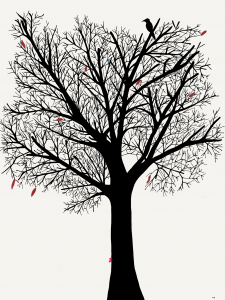It’s been a while since I’ve gushed, but as I was driving to school this week, I started thinking about ways I could show more gratitude for all of the good things that are happening in my professional life. This got me thinking about the staff at my school. In each aspect of the organization, there is much to be appreciated from our incredible office staff, caretakers, EAs, CYWs, DECEs, and admin. In that spirit, thank you, thank you, thank you.
Since this the core of readers of this blog are ETFO members, I will continue before the music plays me off and before being escorted off the stage. Here goes…
Thank you for putting in all the hours that make a difference in the
lives of learners before, during, and after school.
Thank you for being the only smile that a child might see each day.
Thank you for being the hand that reaches out to a student who is feeling big feelings.
Thank you for being the one who comforts in times of uncertainty.
Thank you for being calm, considerate, and caring when things are not going well.
Thank you for making sure that new kids feel welcome from the moment they
walk through your doorway.
Thank you for teaching the basics.
Thank you for teaching the basics over and over again.
Thank you for teaching the tough stuff.
Thank you for teaching the tough stuff over and over again.
Thank you for teaching morphemes, phonemes, and graphemes.
Thank you for providing accommodations regardless of identification(s) or not.
Thank you for teaching number sense and problem solving,
and for teaching it over and over again.
Thank you for extending due dates when needed,
and for allowing retests when things don’t go well the first time.
Thank you for working hard over the summer to prepare for curriculum changes
even though you should be taking time to rest and recover from the prior year.
Thank you for teaching about truth before reconciliation.
Thank you for ensuring that Asian and Pacific Islander (AAPI) and Black, Indigenous, and People of Colour (BIPOC) are represented in your instructional resources.
Thank you for reading culturally relevant stories that allow all students to see themselves within them.
Thank you for creating safe and engaging classrooms where everyone feels seen.
Thank you for ensuring that students feel seen and know that they matter.
Thank you for seeing that every learner is 10 out of 10 at something,
and for helping them discover and develop their unique talents.
Thank you for hosting a GSA meeting and for displaying a “safe space” sticker.
Thank you for running clubs and coaching teams.
Thank you for spending recess after recess sitting in your classroom so students can catch up on their work.
Thank you for making accommodations that support the faith expressions of learners.
Thank you for helping each other out by sharing resources.
Thank you for answering questions and offering guidance to those who have recently entered our wonderful profession.
There is always time for gratitude in this profession and this is my chance to show my appreciation if I haven’t mentioned it enough above. Thank you for all you do. Will


 For me as a kid, there was no better feeling than opening up a new box of 64 Crayola crayons. The big box with the flip top lid and the sharpener on the side. I can remember agonizing over which colour to pick first and being so thrilled by the perfection of the colour palette in neat rows in that box. I loved to draw and colour. I could do it for hours never lifting my attention from the page. In adulthood, I abandoned doing art for pleasure. It seemed silly for me to sit around and draw or paint for no real reason. I felt I should be doing something productive. A few years ago I began to create art again and realized how much I had missed it and how much joy it brought to my life. I create digital art now, which isn’t quite the same rush as opening a box of crayons but it is easier to share with others-like the picture above. I have recently learned about the health and wellness benefits of creating. Creating is rejuvenating, it is rest and it is soul food.
For me as a kid, there was no better feeling than opening up a new box of 64 Crayola crayons. The big box with the flip top lid and the sharpener on the side. I can remember agonizing over which colour to pick first and being so thrilled by the perfection of the colour palette in neat rows in that box. I loved to draw and colour. I could do it for hours never lifting my attention from the page. In adulthood, I abandoned doing art for pleasure. It seemed silly for me to sit around and draw or paint for no real reason. I felt I should be doing something productive. A few years ago I began to create art again and realized how much I had missed it and how much joy it brought to my life. I create digital art now, which isn’t quite the same rush as opening a box of crayons but it is easier to share with others-like the picture above. I have recently learned about the health and wellness benefits of creating. Creating is rejuvenating, it is rest and it is soul food.